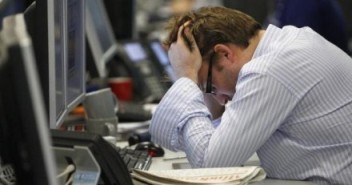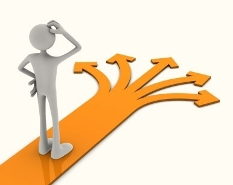Companies and individuals face a range of problems every day. Some of these problems are the direct consequences of our reactions or actions to the situations we face. While we fail to explore the nuances and complexity of a problem, our response is not as elastic and effective as it should be. Systems today are uncertain, volatile, complex and ambiguous and dominant dynamics are beyond our control. Production the right decisions or responding optimally is therefore far more challenging than previously.

It is not very complicated to be a decision-maker; we all make decisions daily. The tricky part is to make right decision. Herbert Simon, a very renowned business scholar, believes we have bounded rationality. This means that even as we are rational beings, our rationality is limited. We don't have all the information and can't observe everything that makes it more difficult to make the right decisions. As well, the speed of execution is increasing constantly and markets and systems respond almost immediately that makes decision-making challenging even perilous. However, as politicians have also learned, this is not the end of the world. We can yet control and predict some factors and make good decisions.
In today's world, it will be very positive to believe that a single effect causes a given problem. More troubling is assumption that addressing this effect would resolve the problem. Though we know there are different degrees of complexity, that different depths of knowledge are necessary to understand a problem or know an opportunity, we casually assume that a problem has only one cause. We often hear that if something is very simple and too good to be true, it regularly is. Accurately!
If this were not the case, it would be simple to reply the following questions: What is happening? Why are we unable to find out lasting solutions? Why are numerous historical companies, the pride of nations, going bankrupt? Why are countries yet failing?
Our socio-economic system is very complex and continues to develop and evolve. As Heraclitus wrote around 500 BC: The only constant is vary.
Therefore, it is important to always identify the difficulty, to describe the boundaries of the problem, and to analyse the future paths and impact. There is most surely a relation between a system's history, its present state and its future state, but this does not mean that similar solutions can be applied to the same problem at different times in history. As well, solutions often depend on changes in different parts of the world. We must therefore build tailor-made solutions for each problem, every time.

Two Swiss companies, Bühler and DSM, started off with much unbeaten business models. They decided to enter a new market China and failed unhappily. They used a linear move towards and simply replicated their well-tested plan in a very different socio-economic and cultural context. After a subsequent careful assessment of their fault and a systemic analysis of the markets they wanted to access, they crafted a successful strategic plan, with contributions from dissimilar stakeholders. This plan involved moving from an exclusive focus on product growth to adopting a more comprehensive approach that prioritized the local context. This more transparent and collaborative procedure allowed the companies to better understand consumer preferences and to involve some stakeholders, which determined their last success.
Based on our experience in working with the public and private sector, we've identified the following steps to guide decision-makers and strategists, who can help them, turn the most complex issues into opportunities.
Recognize the causes and effects of the problem across social, economic and environmental dimensions. The system is categorized by feedbacks within and across sectors that may create synergies or side effects. All these different dimensions must therefore be carefully analysed.
The collapse of Lehman Brothers was the first event to focus the world's attention on the financial disaster. But it did not supply decision-makers with sufficient information about the real cause of the financial crisis. It was only a symptom, not cause. It was just one event in growing concerns about the banking system's stability, slowdown of the housing market and the economy as a whole. These trends all provided precious information about system's previous direction.
Make use of a multistakeholder approach to account for some points of view and to incorporate as much varied knowledge as possible in analysis. Solving complexity requires collaboration from actors (public, private, civil society) in dissimilar sectors (economic, social, and environmental), levels (international, national, regional) and interests. Only diversity can resolve complex problems such as global warming or unemployment. Each stakeholder brings different, frequently unique, assets to the table. Companies, such as, have financial means, whereas NGOs have local knowledge and the power that comes from working with volunteers.
One instance of the importance of multiple perspectives and ideas for business development is Procter & Gamble's (P&G) success with its open innovation programme Connect + Develop. It consists of an internet platform where companies and entrepreneurs are able to propose innovative business solutions to meet P&G needs. This open approach provides P&G with a variety of options. It then chooses the most expensive options and develops them in collaboration with person or company that proposed them.